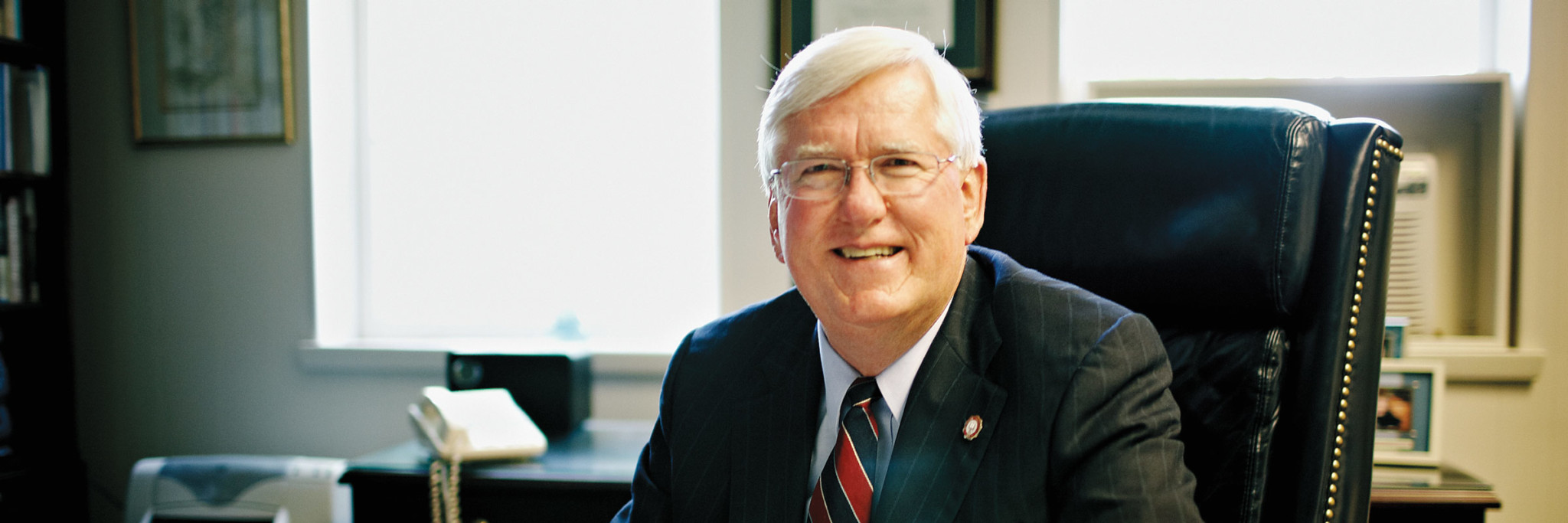History. At Denison, we’ve got it. And I’m not just saying that because, by profession, I am a historian. We’ve got it by virtue of age—and experience. This academic year, we celebrate the 175th anniversary of the college. Think about it! There are 3,847 not-for-profit four- and two-year colleges and universities in the United States. The college that became Denison is the 55th in order of founding. There were just nine colleges (that survived, anyway) established during the colonial period, nine that organized in the years just before our present federal Constitution went into effect in 1789, and seven that commenced operations before 1800. Thirty more began before the end of the year 1831, the Granville Literary and Theological Institution being the last of these, holding its first classes on December 13. Our college was founded just after and just before other venerable institutions of higher learning: New York University and Wesleyan (CT) University a few months earlier and Gettysburg College several months later. But the Granville college that took the name Denison in 1856 to recognize a benefactor was among the very first in the “West,” one of the initial six to be established in the old Northwest Territory that eventually became the Great Lakes states. It was a pioneer.
Here on campus, we’ve made much of our 175th anniversary. And we’ve spread our celebrations across the whole year, too. Makes sense. While Principal/President John Pratt assembled the first class of a couple dozen scholars in the original Baptist church building on the northeast corner of West Broadway and Cherry Street on December 13, 1831, the college did not receive its legal charter from the State of Ohio until February 2, 1832. So we’ve got two Denison semesters in which to celebrate our birthday! Some of our commemorative events have been passive: beginning-of-the-year banners hung from the lampposts on the Front Drag and larger ones inside much-used Swasey Chapel, a “history wall” with photos and vignettes of Denison’s past installed in Slayter Union, and display cases in buildings across campus filled with memorabilia from the Denison Archives. They also include a monthly website feature that highlights a graduate from each of the college’s first decades as well as a lengthened introduction to the annual course catalog recalling the impetus for teaching and learning brought to the frontier by early college leaders who were educated in the independent-thinking Baptist tradition of Brown University.
But we’re also celebrating actively. On December 13, 2006, a large audience of Denison students, faculty, staff, and emeriti enjoyed a portrayal of some of the college’s early years by a costumed troupe of lively performers organized by philosophy professor Tony Lisska. Dr. Lisska, narrating in the persona of Francis Shepardson (Class of 1882 and author of Denison’s centennial history), introduced important leaders and alumni from Denison’s past played by graduates/friends/professors Laura Bracken ’83, Jon Bridge ’82, political science professor Sue Davis, Tom Martin ’68, Louis Middleman, biology professor Tom Schultz, and Greg Sharkey ’84. Early in the spring semester, students will enjoy a “birthday” dinner in each of the two main dining halls. In late January, New York Times columnist David Brooks will speak at an all-college convocation about contemporary American education and culture, and the Board of Trustees will join the campus community in dedicating a 175th anniversary entrance sign along with a historical marker in Swasey Chapel.
Denison Magazine editor Paul Pegher advised me some time ago that he had chosen as the theme for this issue the notion of “enterprise.” That’s a concept that resonates throughout the history of our college. It was enterprising men and women who boldly sought to bring liberal education to the frontier of a youthful nation, establishing the institutions that became Denison and Shepardson College for Women—partners that eventually merged to form the modern Denison. It was this same combination of commitment and opportunism that led the college’s alumni, faculty, and friends to rally during repeated periods of challenge not only to keep the fledgling institution afloat but to keep it abreast of the progress of teaching and learning and its students’ evolving needs.
But “enterprise” clings to Denison not only because it was required to commence and sustain the college. Rather, it speaks to something in a liberal arts education itself. In the pages of this magazine you will find evidence of enterprising Denisonians of all kinds—students, graduates, and professors who have taken risks, who have sought to ask new questions, who have been dissatisfied with received verities. Their enterprising character has not only shaped careers and civic contributions but shaped lives. These are products of the education laid out in the strategic vision for the college under which we operate today, the vision of “a participatory education that engages students in critical thinking and problemsolving in close collaboration with outstanding teacher-scholars” that prepares Denison graduates “to lead complete lives and make a difference in the 21st century world.” This reminds me: Denison’s history is still in the making. And the makers are our graduates, our students, and our educators. They’re you!

